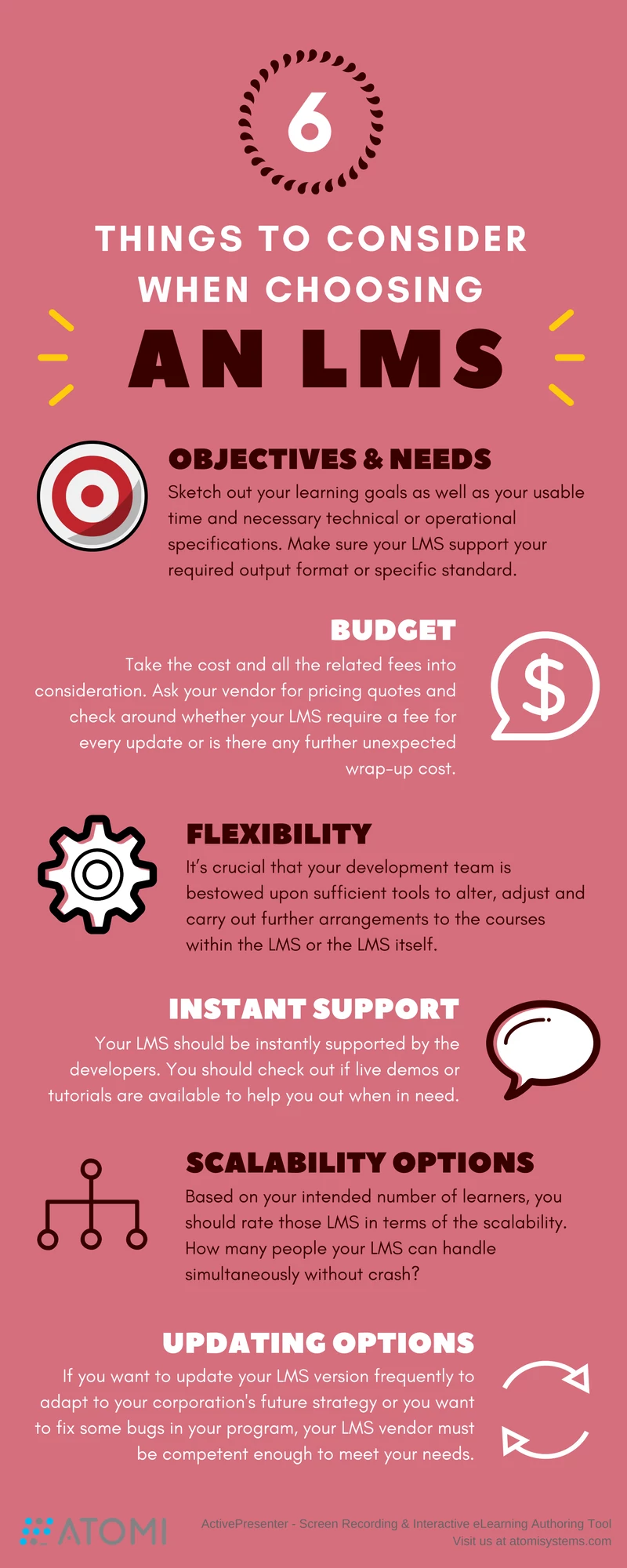What is LMS?
Learning Management System (LMS) is becoming the essential aid of the administration, documentation, tracking, reporting as well as the conveying of eLearning courses. Chances are that when starting to find the best one for yourself or your organization, you might be bewildered with tons of it available.
In comparison with other elearning software, ActivePresenter had proven that it is the best tool for educators and trainers around the world. It is not because of unique built-in feature but also extremely reasonable price. This powerful authoring tool enables you to create engaging and interactive courses and effortlessly export them as SCORM (Sharable Content Object Reference Model) or xAPI (Experience API) packages. These industry-standard formats ensure that your meticulously designed courses can be easily uploaded, tracked, and managed within a wide variety of LMS platforms, providing a consistent and effective learning experience for your audience. So, download ActivePresenter now to experience all eLearning features with no limitations.

And now, don’t let you wait any longer, this article will show you how to choose the best LMS to create, maintain, and deploy your eLearning courses by putting into account these seven prerequisites.

Here are 6 things you need to consinder to get a perfect LMS
1. Define Objectives and Needs
The foremost thing to do is to sketch out your learning objectives and goals. After that, you had better list out your usable time and necessary technical or operational specifications for your course accordingly. It would be a waste of time and effort if you end up adopting an LMS that doesn’t support your required output format or a specific standard. Therefore, prominent features should also be taken into account.
2. Allocate Budget
As a matter of fact, your company’s budget decides it all. Take the cost and all the related fees into consideration. Ask your vendor for pricing quotes and check around whether yours require a fee for every update or is there any further unexpected wrap-up cost imposed on users by the developers.
3. Need of Flexibility
Given the preexisting technical know-how, does it give you enough customization options at hand? It’s crucial that your development team is bestowed upon sufficient tools to alter, adjust and carry out further arrangements to the courses within the LMS or the LMS itself. Moreover, your system you have your eyes on should offer features that are not only sufficient for now but future.
4. Instant Support
Sometimes you may want to be sure about the vendors’ commitment to the service beyond the contract. Your LMS must be in use for a long time span ahead so it should be sufficiently supported by developers. In Addition, it will be better if you check out whether your vendor has live demos or tutorials. Saying that, they should be available to free you from the pitfalls popping up during the courses development operation.
5. Scalability Options
Usually, choosing LMS is the task that is overlooked by firms and organizations. Based on your intended number of learners, you should rate those LMS in terms of the scalability. How many people your LMS can handle simultaneously? Will it collapse when, say, 500 users approach at the same time? This often-taken-for-granted feature may result in undesirable consequences if not considered thoughtfully.
6. Updating Options
If you want to update your LMS version frequently to adapt to your corporation’s future strategy or you want to fix some bugs in your program, make sure your LMS vendor is competent enough to meet your needs.
After taking into account those pros and cons, those best features and the price associated with each LMS competitor, just pick the most suitable one that fits with your objectives and needs. It’s not to say which one is the best, but bearing in mind 6 key things above will free you from getting wrong in choosing the LMS.
